Reptiles, much like many other animals, undertake incredible migrations in search of food and water to survive in changing environments. Each species has its own unique migration patterns driven by environmental cues such as temperature shifts, food availability, and breeding needs. These migrations, often covering great distances, showcase the remarkable adaptability of reptiles to diverse habitats and ecosystems. In this article, we’ll explore some of the most epic reptile migrations, uncovering the challenges they face and the remarkable strategies they employ to navigate their journeys.
Leatherback Turtles (Dermochelys coriacea)

Leatherback turtles embark on one of the most remarkable reptilian migrations, traveling more than 10,000 miles annually across ocean basins. These massive turtles, reaching lengths of up to 6 feet and weighing up to 1,000 pounds, are known for their soft, leathery shell, unlike other sea turtles. They migrate between tropical nesting beaches, such as those in Trinidad and Tobago and Gabon, and cooler feeding grounds, where they feast primarily on jellyfish. Their migration patterns are guided by an innate ability to detect the Earth’s magnetic field, allowing them to navigate vast distances with precision. Their long journeys ensure they reach areas abundant in jellyfish, their primary food source, which is critical for maintaining energy reserves during migration. They are also unique in that they endure temperature fluctuations that would be fatal to most reptiles, thanks to adaptations like a layer of fat under their skin.
Green Sea Turtles (Chelonia mydas)
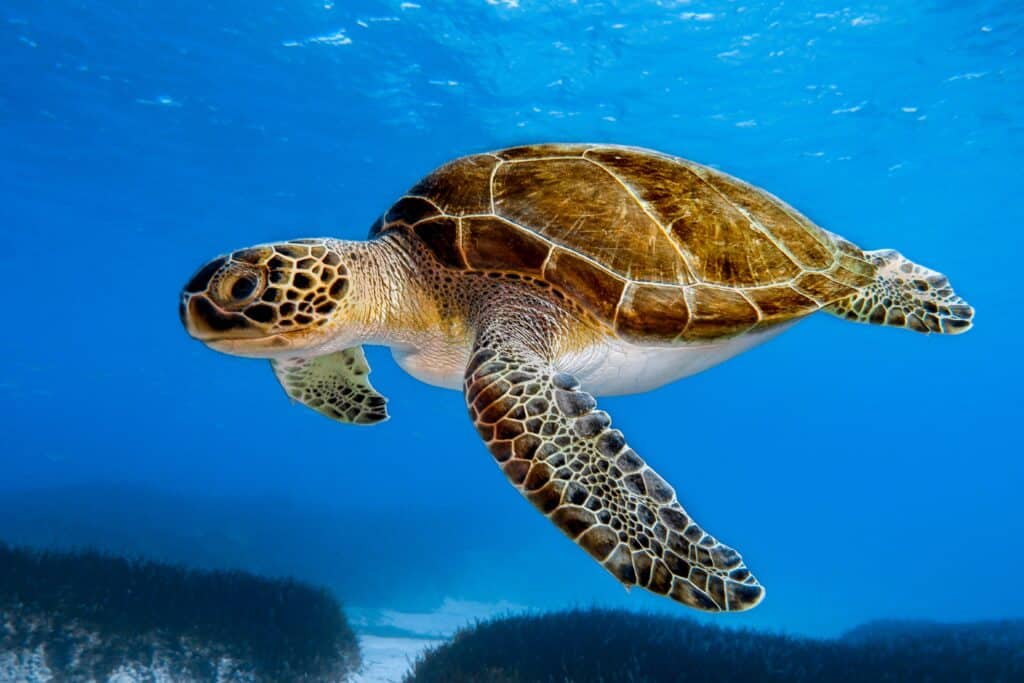
Green sea turtles are famed for their epic migrations between feeding grounds and nesting beaches, often traveling thousands of miles. They typically feed on seagrass and algae in shallow coastal waters but return to their birthplace beaches to lay eggs, a behavior known as natal homing. Some populations, such as those nesting in the Galápagos Islands, migrate across the Pacific to reach feeding grounds in Central and South America. This migration is essential for their survival, allowing them to take advantage of seasonal food availability. Their herbivorous diet plays a critical role in maintaining the health of seagrass beds, which are vital ecosystems. These migrations are perilous, with threats including entanglement in fishing gear and loss of habitat due to coastal development. They rely on environmental cues, such as ocean currents and temperature changes, to time their migrations accurately.
American Alligators (Alligator mississippiensis)
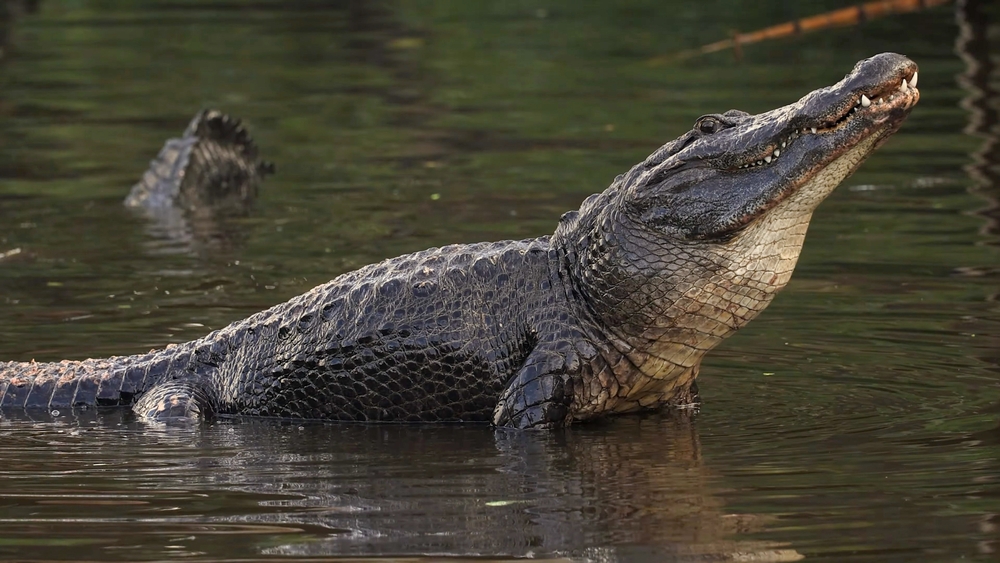
American alligators exhibit seasonal migrations that are crucial for their survival, particularly in search of water sources during dry periods. These reptiles can travel overland from drying ponds or lakes to find larger water bodies, particularly in the southeastern United States. They migrate to avoid harsh weather conditions, such as droughts, and to find suitable habitats for feeding and breeding. They primarily consume fish, amphibians, birds, and small mammals, and they require access to water to catch their prey. During migrations, they may also relocate to more isolated areas to avoid human contact or competition with other alligators. These movements are typically triggered by changes in temperature or water levels, with them migrating to warmer areas during colder months or to deeper water when their usual habitats dry up.
Galápagos Tortoises (Chelonoidis spp.)
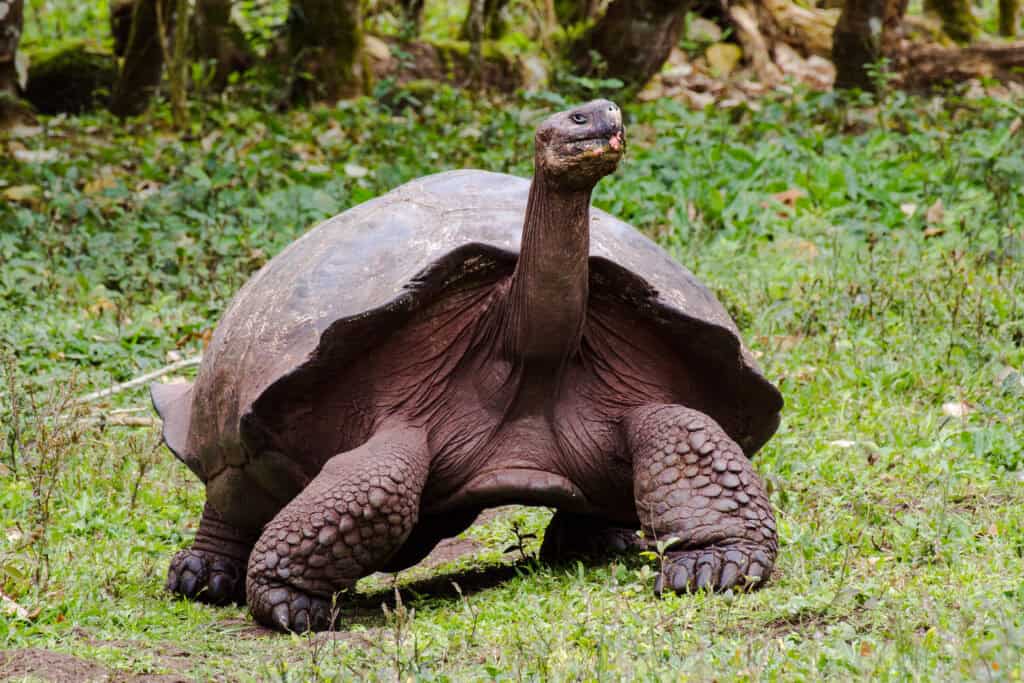
Galápagos tortoises are known for their long migrations across the volcanic landscapes of the Galápagos Islands, primarily in search of food and more favorable climatic conditions. They migrate seasonally between lowland areas, where they graze on grasses and cacti, and higher elevations, which offer cooler temperatures and lush vegetation. Their migration is essential for survival, allowing them to exploit the island’s diverse resources at different times of the year. They feed on a wide variety of vegetation, including grass, leaves, and fruit, making them important ecological players in seed dispersal. Their migration paths often follow ancient trails worn into the island terrain over centuries of repeated travel. During dry seasons, they move to highlands to access moisture-rich plants, and they return to lower areas in the rainy season. Conservation efforts are vital as habitat loss and introduced species, such as rats and goats, threaten these iconic creatures.
Saltwater Crocodiles (Crocodylus porosus)
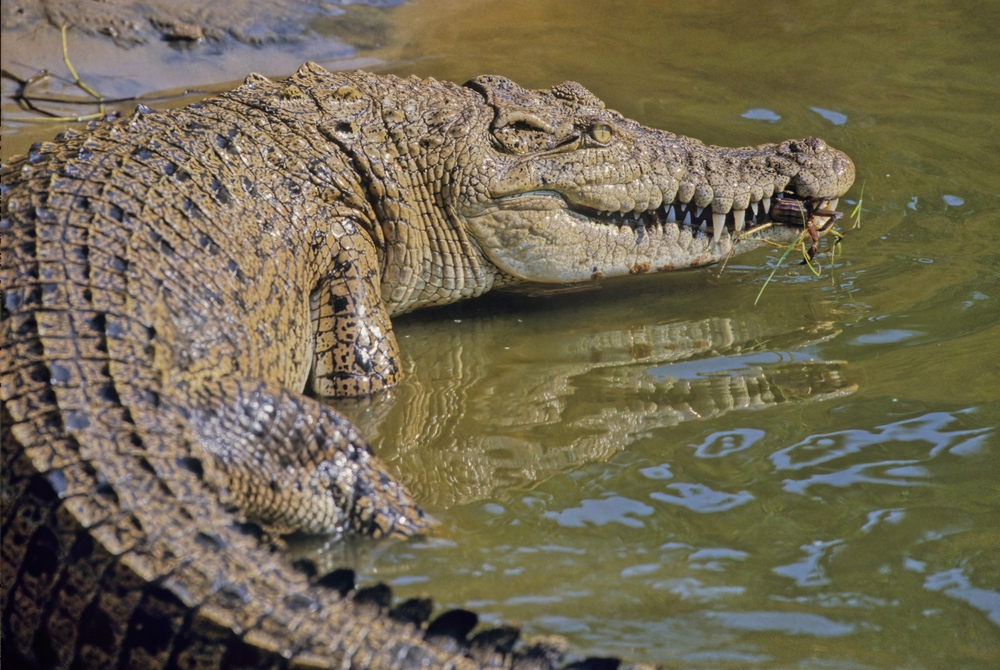
Saltwater crocodiles are renowned for their ability to travel vast distances, particularly in search of new habitats or food sources. Found in Southeast Asia, northern Australia, and parts of India, these apex predators can migrate along coastlines and even across open oceans. They are highly opportunistic feeders, consuming a variety of prey, including fish, birds, and mammals. Their migration is often triggered by changes in water levels, such as seasonal flooding or drought, which can force them to seek new territories. These migrations are critical for maintaining genetic diversity, as crocodiles often travel to new areas to find mates and avoid inbreeding. In some cases, individuals have been known to travel hundreds of kilometers to colonize new habitats or escape human disturbances. Their remarkable swimming ability allows them to cover these distances efficiently, aided by powerful tails and streamlined bodies.
Loggerhead Turtles (Caretta caretta)
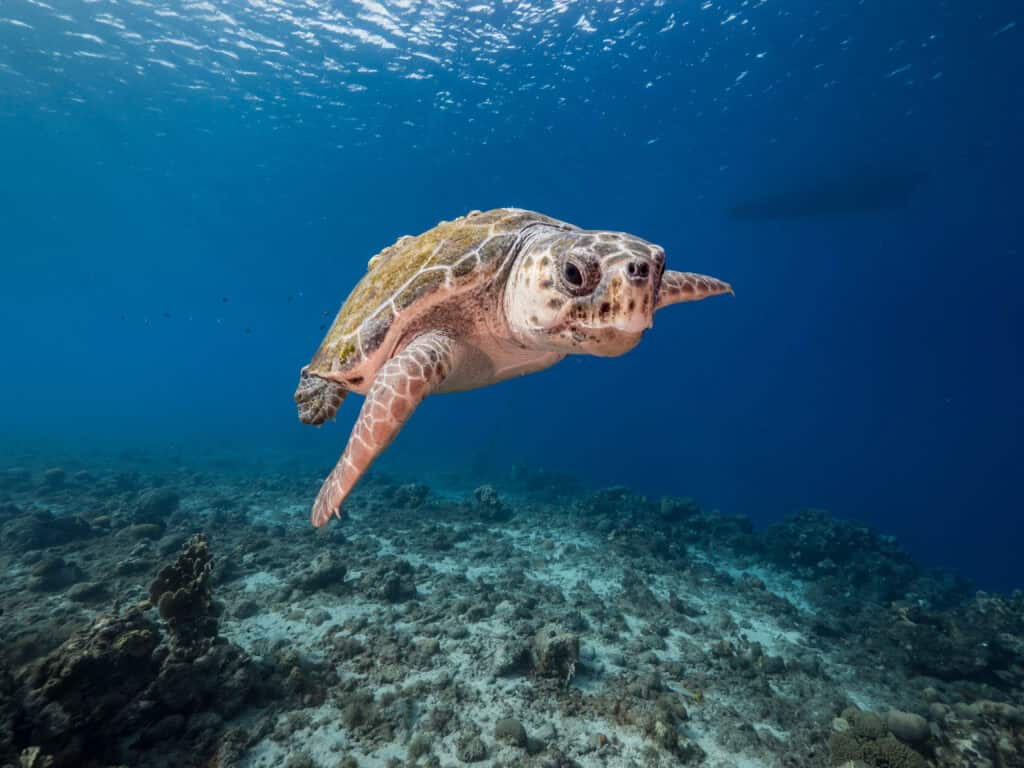
Loggerhead turtles are famous for their long-distance migrations across ocean basins, often traveling thousands of kilometers between nesting and feeding grounds. They feed primarily on jellyfish, crabs, and other invertebrates, using their strong jaws to crush their prey. They are widely distributed across subtropical and temperate regions, with notable populations in the Mediterranean, the Atlantic, and the Pacific Oceans. After nesting on beaches, such as those in Greece or Florida, loggerheads embark on extensive migrations to rich feeding areas, guided by ocean currents and geomagnetic cues. These migrations are vital for their reproductive success, as females return to the beaches where they were born to lay their eggs. Conservation efforts focus on protecting nesting beaches and reducing bycatch in fishing nets, as loggerheads are particularly vulnerable to entanglement. Their migratory behavior also makes them susceptible to threats like marine pollution, particularly plastic, which they can mistake for jellyfish.
Eastern Diamondback Rattlesnakes (Crotalus adamanteus)
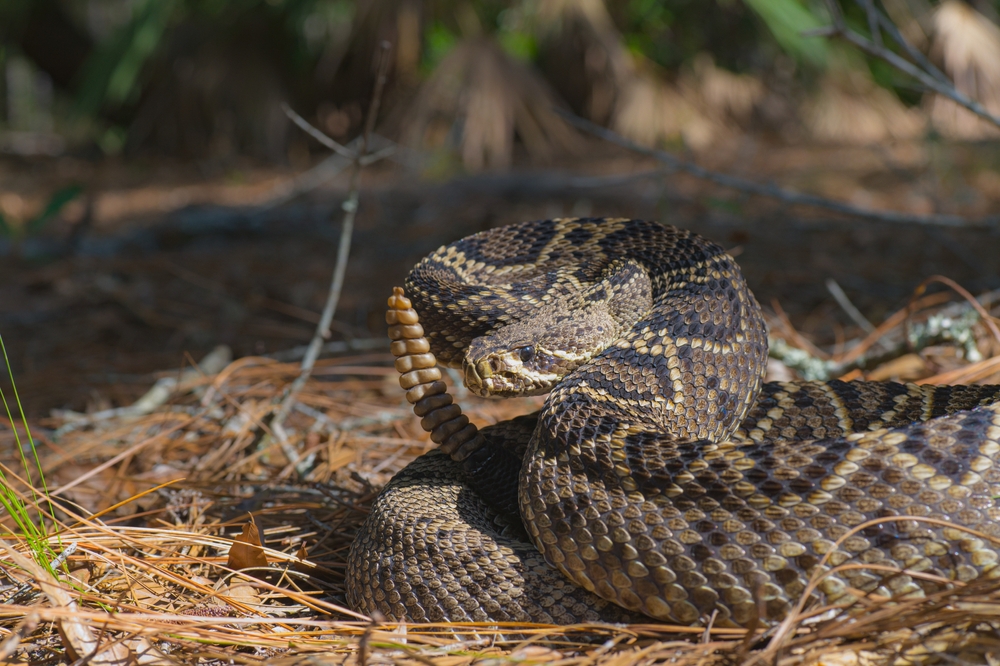
Eastern diamondback rattlesnakes undertake short migrations within their home ranges, typically moving between summer and winter habitats. Found in the southeastern United States, they prefer to overwinter in burrows or other sheltered areas to avoid cold temperatures, while migrating to open pine forests or coastal habitats in warmer months. They primarily feed on small mammals, such as rodents and rabbits, which they ambush using their heat-sensing pits. These migrations are essential for the snakes’ survival, as they allow them to exploit different habitats for thermoregulation, breeding, and feeding. They face significant threats from habitat destruction, particularly the loss of longleaf pine forests, which are essential for their survival. Conservation efforts are focused on preserving these habitats and reducing human-snake conflicts, as rattlesnakes are often killed out of fear.
Green Iguanas (Iguana iguana)
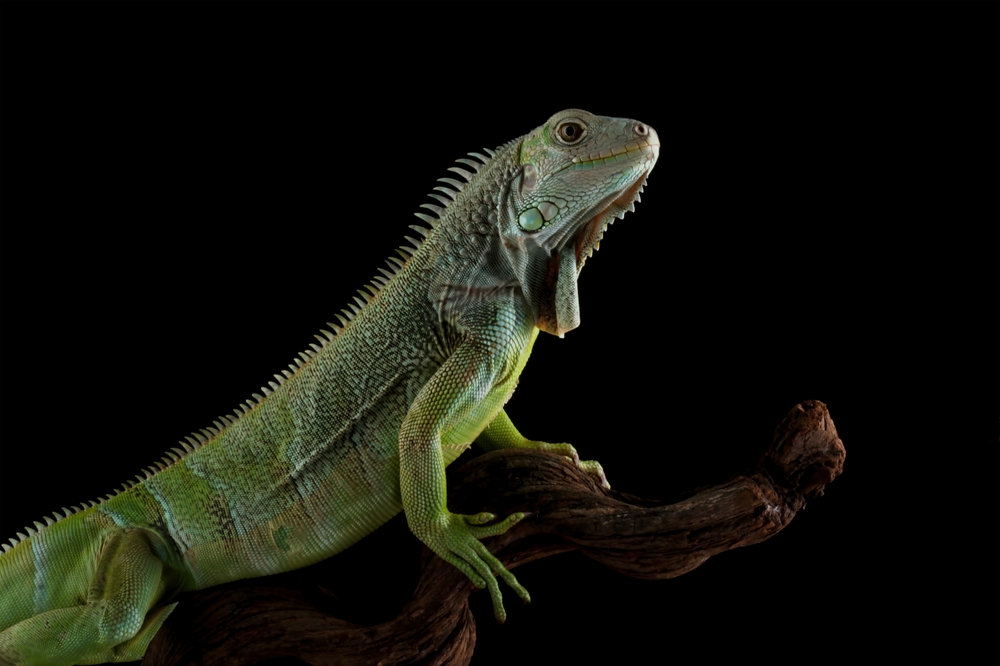
Green iguanas, native to Central and South America, often migrate in search of food or to find better breeding grounds. These large herbivorous lizards primarily feed on leaves, flowers, and fruit, with a preference for young, tender vegetation. During the dry season, they may migrate to areas with higher water availability, as dehydration is a significant risk. In some regions, they also migrate to find mates, traveling between different parts of the forest canopy or moving closer to water sources. Their migrations can be influenced by temperature fluctuations, as they are ectothermic and need to regulate their body temperature. These migrations are important for maintaining genetic diversity, as those that travel longer distances have access to a wider range of potential mates. Conservation efforts focus on preventing habitat destruction and managing invasive populations, particularly in places like Florida, where iguanas have become problematic due to their rapid reproduction and impact on local ecosystems.
Marine Iguanas (Amblyrhynchus cristatus)
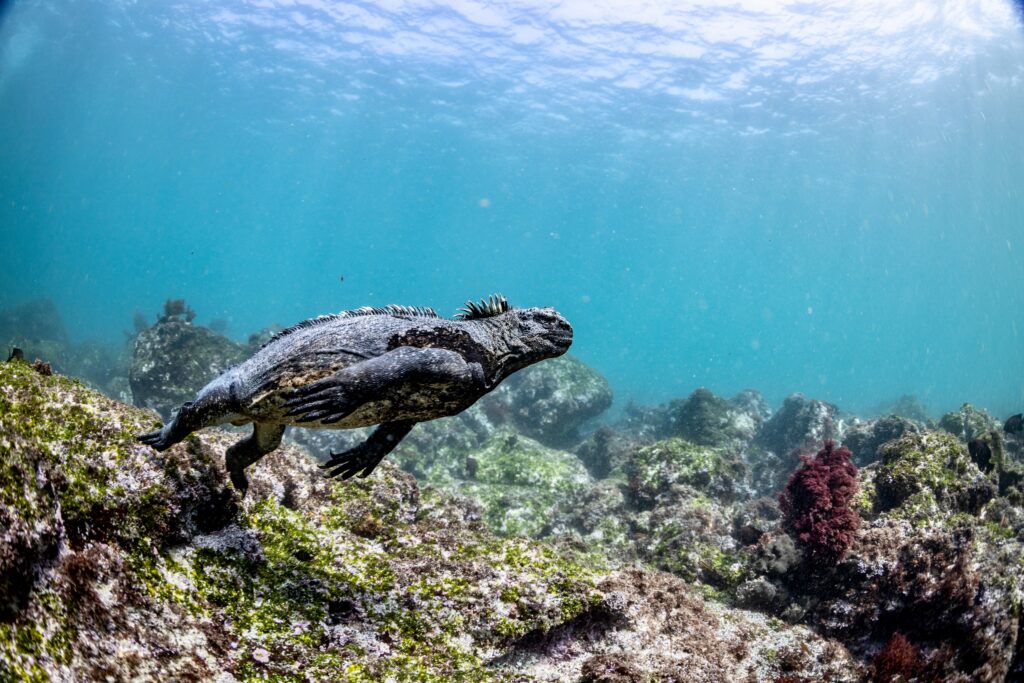
Marine iguanas, endemic to the Galápagos Islands, are the only lizards in the world that forage in the ocean, and they undertake short but critical migrations between land and sea. These iguanas feed primarily on algae, diving into the cold waters surrounding the islands to graze on marine plants. During breeding seasons, they migrate inland to find suitable nesting sites in the volcanic soils, often traveling across rocky shores. Their ability to regulate their salt intake, through specialized nasal glands, allows them to thrive in a harsh environment with limited freshwater sources. Climate change and rising sea temperatures threaten their food supply, as warmer waters can reduce the availability of algae. Conservation efforts are focused on protecting their unique habitats, particularly from invasive species and human activities that disrupt their nesting areas. Despite their relatively short migrations, they play a key role in the ecosystem by controlling algae growth and providing a food source for predators like hawks.
Gopher Tortoises (Gopherus polyphemus)
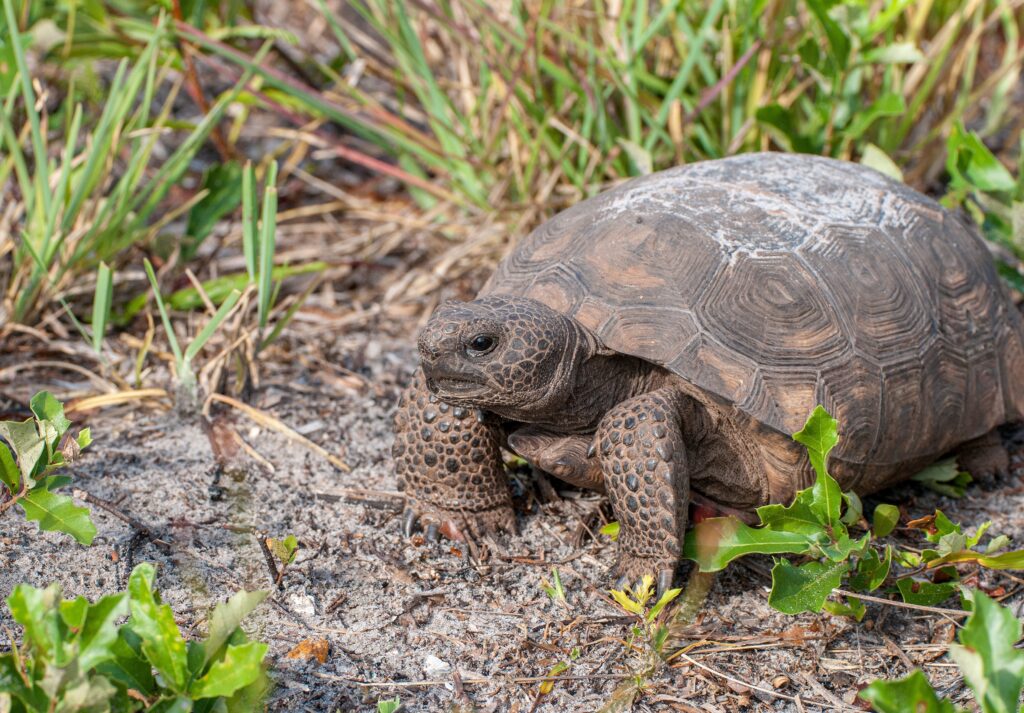
Gopher tortoises, native to the southeastern United States, are renowned for their burrowing behavior and seasonal migrations. While they do not travel long distances like some migratory species, gopher tortoises exhibit short-range migrations to find food, mates, and optimal basking or hibernation spots. These herbivorous reptiles feed mainly on grasses, legumes, and fruits, which influences their movements across their habitat. Their burrows are essential not only for their own survival but also for over 350 other species, earning them the nickname “ecosystem engineers.” During warmer months, gopher tortoises may move to different areas to locate fresh vegetation or avoid overcrowding. They tend to migrate towards higher ground during rainy seasons to avoid waterlogged burrows. Conservation efforts are focused on protecting their burrows, which are threatened by habitat destruction, particularly from urban development and agriculture. Additionally, they are frequently killed on roads during migrations, making wildlife corridors crucial for their survival.
Olive Ridley Turtles (Lepidochelys olivacea)
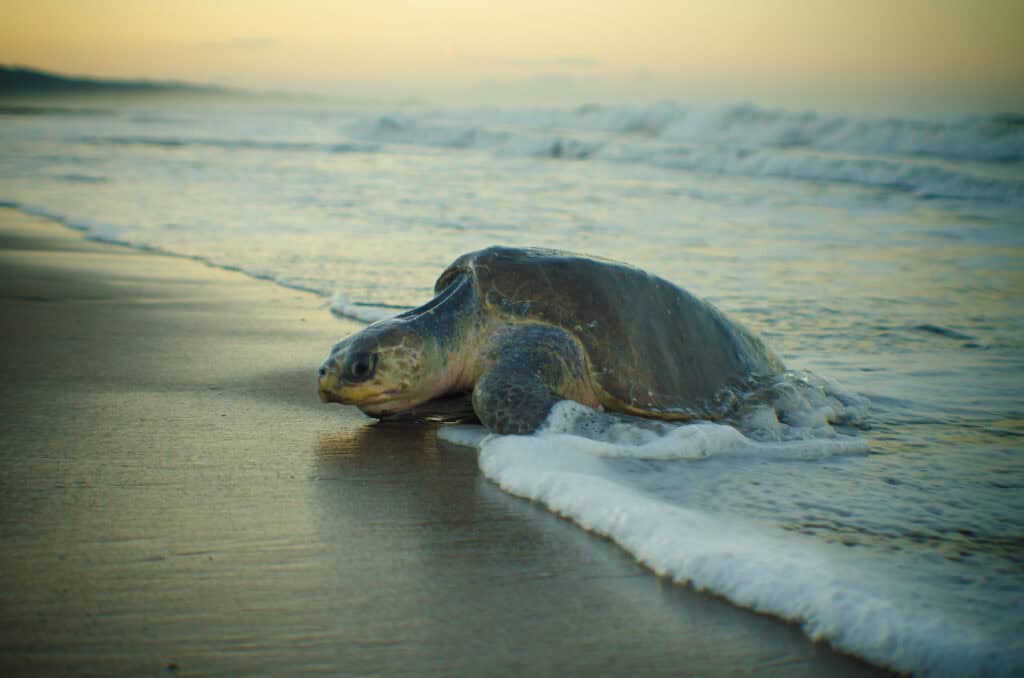
Olive Ridley turtles are one of the most migratory of all sea turtles, traveling thousands of miles annually between feeding grounds and nesting beaches. They are known for their spectacular mass nesting events called “arribadas,” where thousands of females come ashore simultaneously to lay their eggs. They primarily feed on jellyfish, shrimp, and small fish, often migrating along ocean currents to find areas with abundant food. Notable nesting sites include the coasts of India, Costa Rica, and Mexico, where they make their long journeys from the open sea. After hatching, young turtles make their way to the ocean, where they drift in the pelagic zone until they are old enough to return to coastal waters. Their migrations are influenced by environmental factors like temperature and food availability, which also play a role in the timing of their nesting seasons.
Eastern Indigo Snakes (Drymarchon couperi)
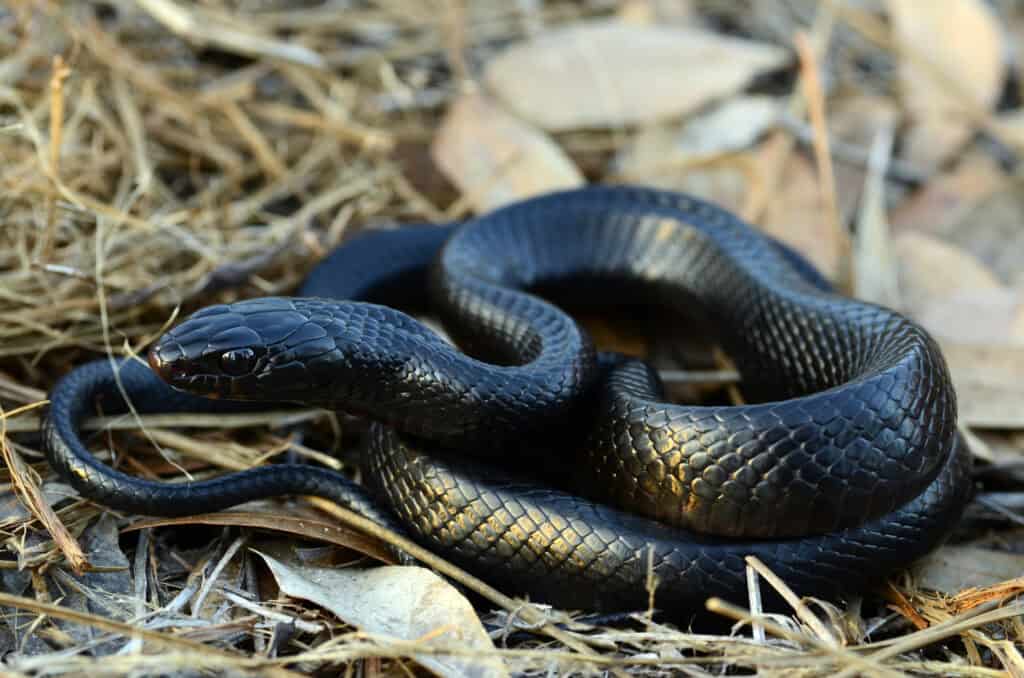
Eastern indigo snakes, found in the southeastern United States, exhibit seasonal migrations that are critical for their survival. These non-venomous snakes migrate between different habitats, such as pine forests and wetlands, to find food, mates, and suitable shelter. They primarily feed on small mammals, birds, and even other snakes, including venomous species. Their migration patterns are closely linked to their reliance on gopher tortoise burrows for overwintering, as these burrows provide essential protection from cold weather. During warmer months, they may travel several miles in search of prey or new territories, making them one of the most wide-ranging snakes in North America. Habitat fragmentation is a major threat to their migration, as urban development and agriculture reduce the availability of suitable habitats. Conservation efforts focus on preserving longleaf pine forests and protecting gopher tortoise burrows, both of which are critical for the survival of indigo snakes.
Nile Crocodiles (Crocodylus niloticus)
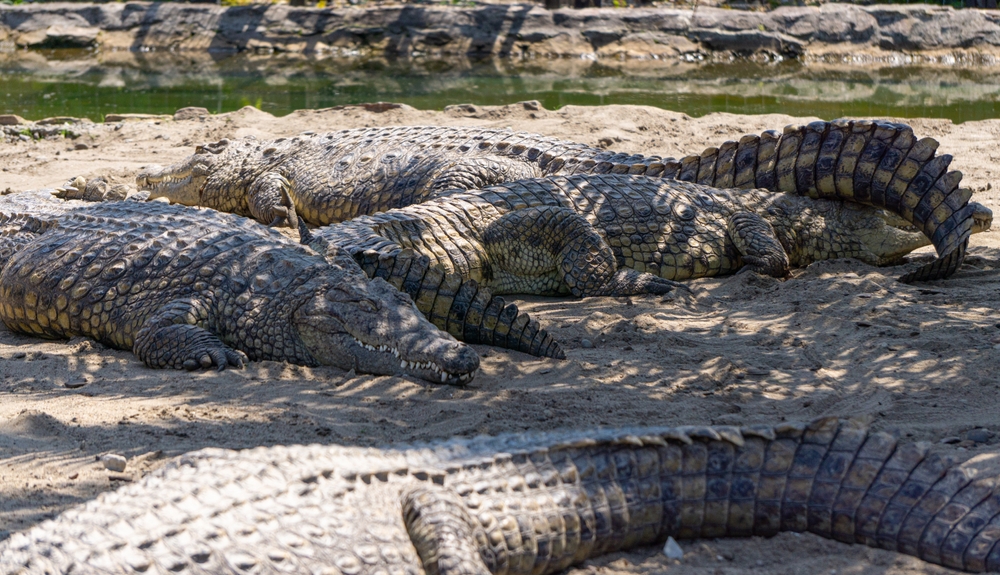
Nile crocodiles are one of the largest reptilian predators, capable of undertaking long migrations in search of water and food. Found throughout sub-Saharan Africa, they are highly adaptable and can migrate between rivers, lakes, and wetlands depending on seasonal changes in water levels. During dry seasons, they may travel overland to reach permanent water sources where they can hunt fish, birds, and mammals. Their migratory behavior is also influenced by breeding cycles, as they move to isolated areas to nest and avoid competition with other predators. They are apex predators and play a crucial role in controlling prey populations in their ecosystems. However, they are increasingly threatened by habitat loss due to human activity, including dam construction and agricultural expansion. Conservation efforts include the creation of protected areas to safeguard critical habitats and migration corridors, as well as initiatives to reduce human-wildlife conflict in regions where crocodiles are considered a danger to livestock.
This article originally appeared on Rarest.org.
More from Rarest.org
15 Most Breathtaking Waterfalls on Earth
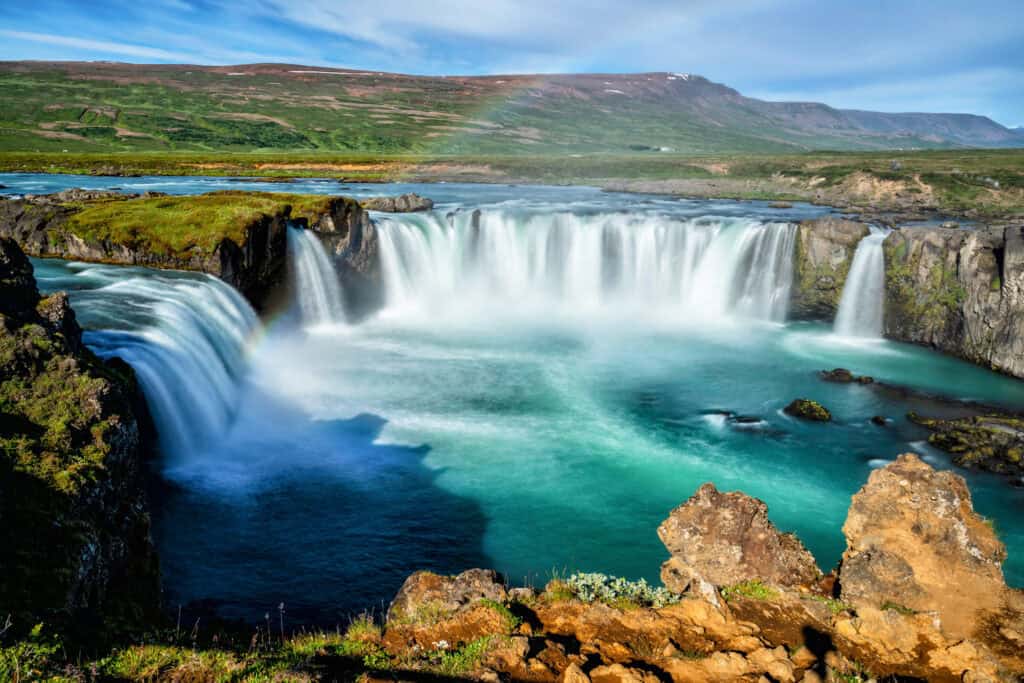
Waterfalls captivate with their sheer power and beauty. They offer breathtaking views and a chance to connect with nature. Here’s a look at some of the most stunning waterfalls around the globe. Read More.
8 Most Fascinating Underwater Ruins
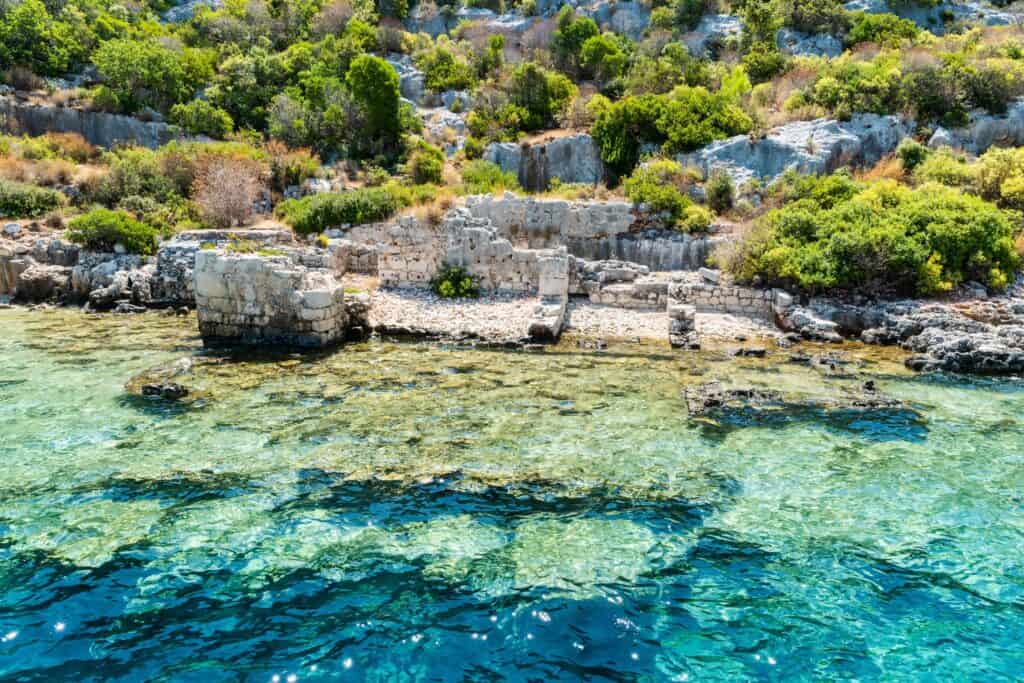
The world’s oceans hide countless secrets. Among them are ancient cities, temples, and monuments submerged by time and tides. Read More.
14 High-End Cars Owned by the Rich and Famous

Owning a high-end car is a statement of luxury and success. The rich and famous often have collections of the most exclusive and expensive cars. Read More.
